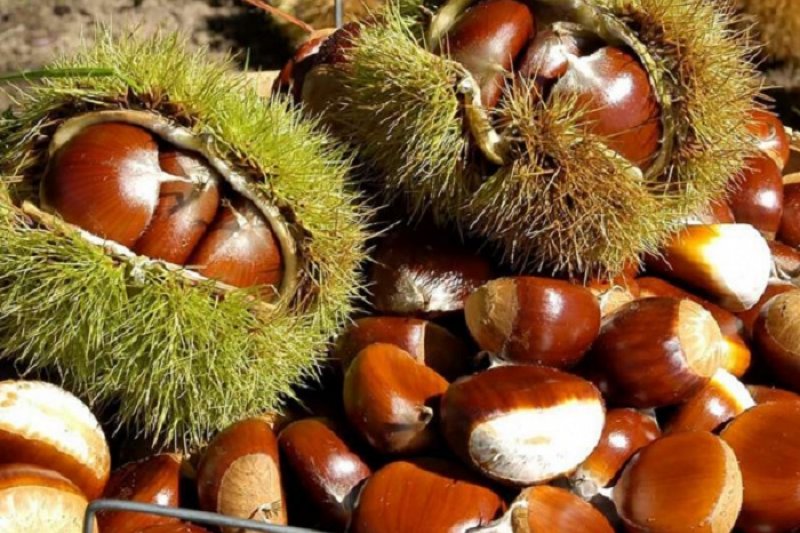Albania Ranks 9th in World for Chestnut Exports
The growing demand for the consumption of nuts and the suitable climatic conditions for their production in the north of the country create opportunities for profits in the inhabitants of these areas.
A study by professors Drini Imami and Engjëll Shkreli, funded by the EBRD, confirms that walnuts (and especially chestnuts) are an important source of income for communities where intensive agriculture is not appropriate, and where employment alternatives are scarce. Chestnuts in particular are the most important nut product in terms of production and international trade.
The data show that almost 50% of fruit exports from Albania are dominated by chestnuts. Globally, Albania is ranked 9th for world chestnut exports. Currently, chestnut production is largely based on existing, organic forest massifs. Some parts of the production areas are certified as organic, a fact which presents a clear competitive potential for export.
The chestnut business becomes favorable because Albania has organic produce that can be sold at a high price in international markets and on the other hand, chestnut has less cost than other fruits as it grows in forests in free condition and generally costs for their maintenance are lower than for other types of fruits.
Albania produces approximately 6.000 tons of chestnuts per year. Kukes region is the main area of ​​chestnut production. A large mass of 2000 ha is located in Tropoja (in the region of Kukes).
The region of Shkodra, and respectively Malësia e Madhe, is also an important area for the production of chestnuts, with a comparative advantage regarding the quality of the varieties of Rec, (including the genotypes "Puka"). Thanks to the high quality, about 50% of the production is exported mainly to Italy. The districts of Dibra, Puka, Shkodra, Bulqiza, Librazhd and Mat are also important producers of chestnuts.
Experts claim that financing chestnut-related businesses do not pose a risk to lending financial institutions. They suggest that some of the most important funding opportunities at the farm level are chestnut plantations, including indigenous cultivars best adapted to Albanian conditions.
But the biggest needs arise in the processing chain and the support of large integrated projects, which include all the main stages of chestnut processing.
There is a need for investment in increasing storage capacity, supporting hot chestnut storage equipment and facilities, supporting simple sorting machinery and other trading equipment and increasing refrigeration capacity.
Given the potential of the export sector, a complete line of chestnut processing can also be considered, consisting of a classification line (which classifies and divides chestnuts into market-destined chestnuts as fresh produce and chestnuts intended for processing), in the fresh product line and in the industrial product line.
Since farmers are actually chestnut harvesters in the forests, they do not seem to show any need for working capital financing. Value chain financing can also be considered - chestnut traders can serve as agents of financial institutions, especially in cases where farmers will engage in chestnut cultivation or better renovation/management of chestnut forests, in the case of which farmers would need investment capital.
(Source: Monitor)













